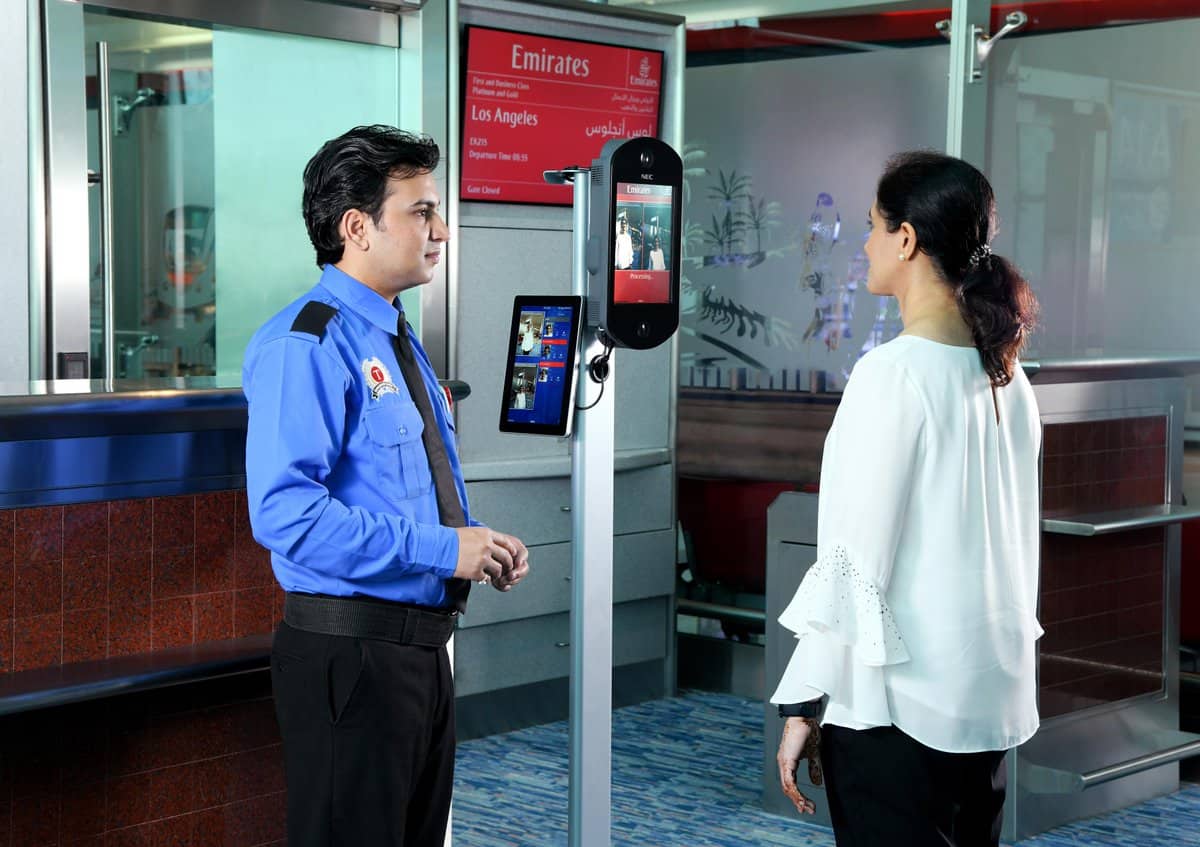Facial recognition technology is now widespread, compatible with smartphones, and used by social media sites. The travel industry is also utilizing this resource more frequently.
Computer intelligence is used in facial recognition technology to identify people based on their facial characteristics. This technique is changing the travel industry today by speeding up the services that travelers seek.
“Facial recognition technology, also known as face biometrics, provides greater confidence and flexibility compared to manual data entry or retrieval of bookings, or even scanning identity documents. Obviously, both airlines and airport managers want to achieve two main goals by utilizing this technology: The first is the speed and quality of service, and the second is a higher level of security when serving passengers”, says Anton Nazarkin, International Development Director at VisionLabs a world-leading computer vision and machine learning company to TRENDS.
According to Nazarkin, face recognition is used in several processes, the most important of which is self-check-in. Face and iris recognition technology, for example, is used at 122 smart gates at Dubai International Airport’s arrival and departure terminals. Passengers can complete passport control procedures in nine seconds using this technique. This was something that worked for a long time in the UAE since the country was one of the early adopters of facial recognition technology.
“I believe the UAE and Saudi Arabia have already been successfully preparing the market to accept such technology, and they are implementing it at their airports” Nazarkin added.
Balance is a must
Facial recognition techniques vary by country in the region, and expecting such a system to be implemented in many large airports around the world in a short time is unrealistic.
That is why, Nazarkin believes that airline and airport managers, border control authorities, and organizations associated with or involved in the passenger moving process must strike a proper balance in terms of how they can begin implementing biometric technologies without attempting to find an all-in-one solution that will solve all their problems.
“Shooting for the stars, as well as attempting to implement something that has not yet reached its high maturity level, clearly sets the industry back for quite some time,” he said.
However, balancing the interests of multiple stakeholders within an airport and within this entire process of the customer journey is something that stakeholders must begin implementing gradually rather than aiming for some miraculous solution that will drive you from the web page where you buy the ticket to the plane.
“While this is something everyone desires, it is not feasible for practical reasons, at least in the next 5 to 10 years,” he mentioned.
Data safety and security
The primary function of facial verification technology is security. It can help identify and authenticate the identity of customers in an instant. With the help of facial recognition, the airport staff can authenticate a traveler against their identity documents, thus enabling them to verify the identity of an individual. Biometric authentication is more secure and allows the travel industry to weed out fraudsters and scammers.
However, one of the concerns that travelers have about facial recognition technology is whether or not their data will be secure.
“It’s not even about biometrics when it comes to data security. It is about data security or, more broadly, cyber security said Nazarkin.
“If an airline’s data center or a government office’s data center in the UAE, Saudi Arabia, Kuwait, or any other country is not built to the highest standards for any type of attack or any type of data in place, it is simply not secure. So, in that sense, we always tell our customers that a system like ours will inherit the security measures that your organization has in place. So, if the security measures you put in place are insufficient, this is something we do not support”.
Valuable technology
No one can argue that face recognition is the most preferred method for authenticating users, and it’s very well accepted by consumers, just as we can’t imagine unlocking our phones with a finger. But now it’s not just about whether governments want to spend money on this or that technology, but about consumers willing to use it and not being afraid of it.
Obviously, this belief is based on two factors: the ability of the government to properly convey how facial biometric data is collected, monitored, and used and the increased confidence in the overall accuracy of facial recognition over the last five years.
We have reached the point in technology where you can use face recognition for almost any scenario on any device with any image source and across multiple use cases and domains. Basically, the cross-domain face recognition everyone dreamed about ten years ago is now a reality. I believe that everyone is ready, the technology is ready, that governments have done their job in implementing proper legal frameworks, and that consumers are willing to use it because it is simple, fast, and very time valuable, especially as the world returns to the COVID low travel times.

